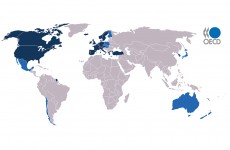The concern about the quality of education is not unique to the states. East Asia is famous for parents pouring money into expensive cram schools and tutors to supplement their children’s education. This supplementary education has come to be both common and expected. In fact, students who aren’t enrolled in some form of cram school find themselves not only in the minority, but may also feel they’re lacking a competitive edge.
The term “cram school” is the closest we have to words like Japan’s juku, and Korea’s hagwon. Both terms denote a tuition-based external academic program that can focus either on test prep or a single subject course. If you can imagine a student going from a full day of school and then going to a couple hours of tutoring and then going to a test prep course and doing this six days a week then you’ll get the idea of cram school.
The debate over the use of tuition-based cram schools is twofold. The first half of this debate focuses on the quality of education itself. The second half of this debate is social, with the main arguments being that there is an unfair advantage for children of wealthy families and that lack of access to tuition-based education limits economic mobility.
In Singapore, the two arguments are coming together as one. Senior Minister of Education and Law Indranee Rajah says that tuition based schools are not needed, maintaining that public schools are equipped with programs for struggling, low-income students to obtain solid foundations in English and math, which should slow the usage of tuition-based programs to create a more equal playing field. Rajah’s goal is for all Singaporeans to have equal access to education regardless of income, which raises the questions of what parents are seeing that she isn’t.
Despite the fact public schools offer help services, ninety percent of students are enrolled at a cram school. What started as a means to help struggling students is now being used by the majority as a tool to increase their competitiveness. While the widespread use of these centers is increasing Singapore’s test scores, there is the question of possible adverse effects of students being too academically saturated.
Despite what the Minister of Education says about public schools being more than adequate, is the continued use of cram schools because the quality is better than the programs offered by the public education system, because it’s a social expectation, or both? What of the potential long-term effects of stress and crowded scheduling? Here in the states, are parents and students considering the same questions in regard to similar programs, and what can we learn from Singapore’s example?
More at :
Strait Times “Tuition not needed under our education system”
The Diplomat “Singapore’s ‘Tuition Industrial Complex’”
Global Voices “Singapore’s Tuition Craze”















